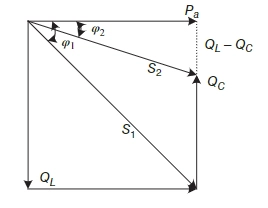Many industries are not effectively using their electrical power fully, and as a result incur higher energy bills and inefficient power usage. We can correct this by using a technique known as reactive power compensation. This is done by increasing the power factor of the system. Read on to find out more about what the power factor is and why it is necessary to improve it.
1. What is power factor?
It expresses the ratio between the active power that can really be used for applications (mechanical, thermal) and the apparent power (VA) supplied by the network—that is, it measures the electrical efficiency of the installation. The best solution is to keep it close to unity, resulting in as much useful power consumed as possible.
Active power: is also called the real power which is responsible for the work done in an electrical system. Our purpose in using the power factor capacitor panel is to increase the real power.
Reactive Power: can best be described as the quantity of “unused” power that is developed by reactive components in an AC circuit or system. Reactive power can also be described as the resultant power in watts of an AC circuit when the current waveform is out of phase with the waveform of the voltage, usually by 90 degrees if the load is purely reactive, and is the result of either capacitive or inductive loads.
Apparent Power (S): It is the vector sum of active and reactive powers.

Power Factor can be expressed as,

It is best for electrical consumers to have power factor as close to unity as possible.
When power frequency current absent of harmonics flows through a network, this ratio equals cos(𝜑) where 𝜑 is the phase shift between current and voltage of the installation:
PF=P∕S= cos𝜑.
Note: This equation, however, only applies for the fundamental component.
Power factor measurements can also be monitored using a PF relay. Power Factor can be measured over a period, KW, V and A and finding the average PF over a time (day/week etc.).





